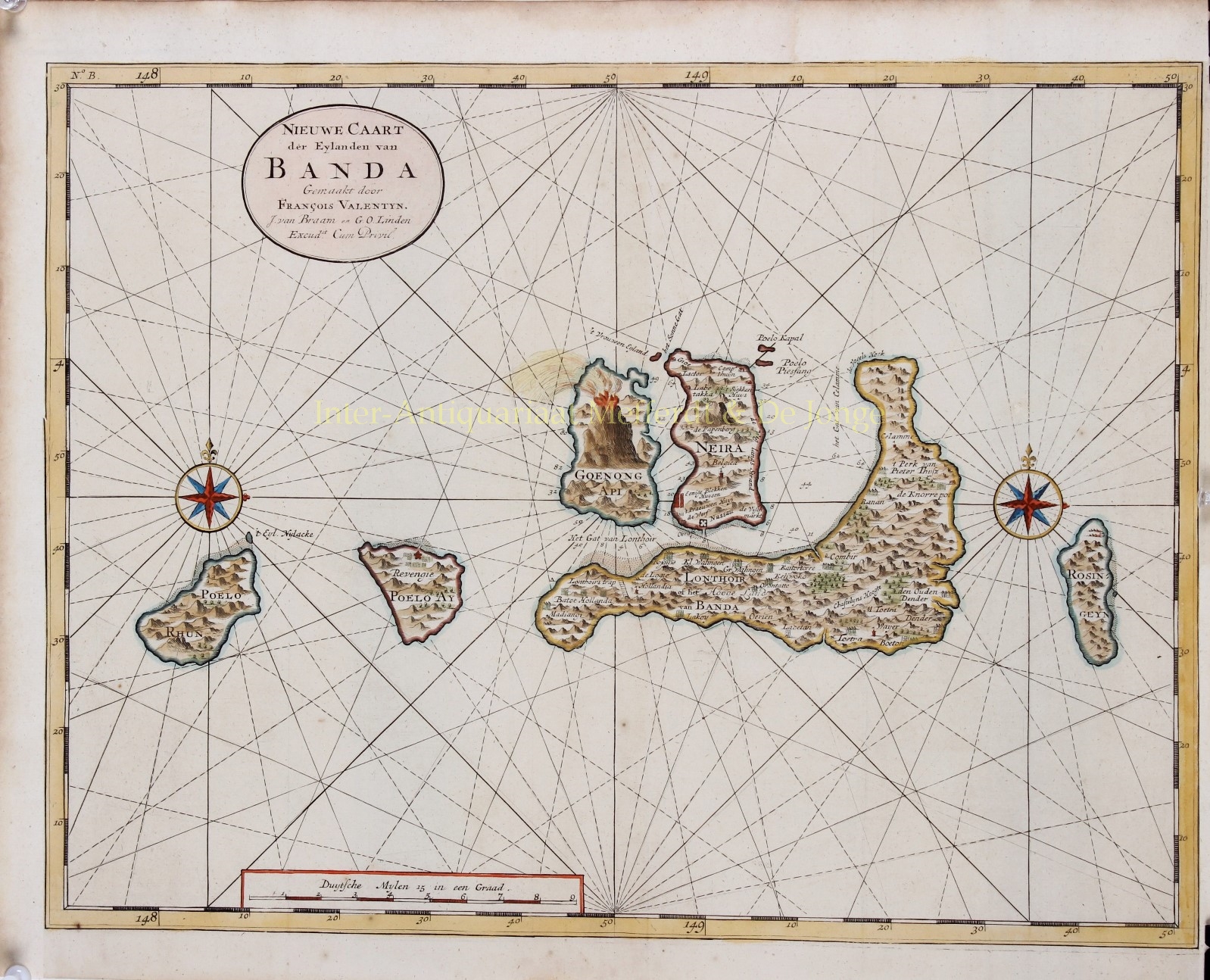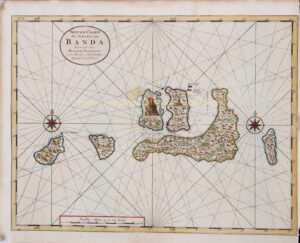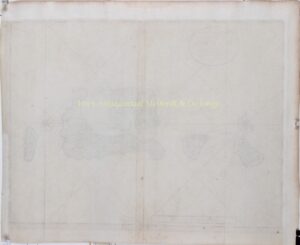CHART OF THE BANDA ISLANDS
“Nieuwe Caart der Eylanden van Banda” Copper engraving from François Valentijn’s “Oud en Nieuw Oost-Indien”, made by Jan van Braam and published in Dordrecht by Gerard onder de Linden in 1724-1726. Coloured by a later hand. Size: 30,8 x 40 cm.
Tight control over Banda was important to the Dutch East-India Company (VOC) to protect the VOC’s effective monopoly on the trade in nutmeg and cloves. The VOC attempted to secure exclusive markets both by monopolizing and limiting the sources. Having calculated that their market could be supplied from the clove production on Ambon alone, it set about destroying all the clove trees on Seram, though without complete success. This policy was more effective however, on the small island of Pulau Run (“Poelo Rhun”), where the VOC succeeded in extirpating all the nutmeg trees that grew there, thereby ensuring that the English, who had been allowed to remain on a tiny coral islet just north of the island could not profit from their fruit.
The interior of most Indonesian islands remained relatively outside the sphere of Dutch influence since the indigenous social structures could continue to be relied upon for communication and transport of goods. But Banda was one of the exceptions. The Bandanese, unwilling to cooperate with VOC demands for exclusive rights to their nutmeg, were effectively erased from the map in 1621 – those who had not either fled or been killed when forced into labour. The VOC then divided the islands into plantations which were leased to former Company employees who stayed on after their term of service was completed. The Company gave them slaves to work the land, and in turn the Company bought their crops at fixed prices.
François Valentijn was a prominent historian of the Dutch East India Company (V.O.C.) who is best known for “Oud en Nieuw Oost Indiën”, his vast illustrated account of the Dutch trading empire in Asia. He travelled to the East Indies twice and served as Calvinist minister to Ambon between 1686 and 1694. In preparing this monumental work, he was given privileged access to the previously secret archives of the VOC, containing transcripts and copies of important earlier Dutch voyages.
While Valentijn’s maps and diagrams were prized possessions, his scholarship, judging by 21st century standards was unscrupulous. Valentijn’s use of the products of other scientists’ and writers’ intellectual labour and his passing it off as his own, reveals a penchant for self-aggrandisement.
Price: SOLD





